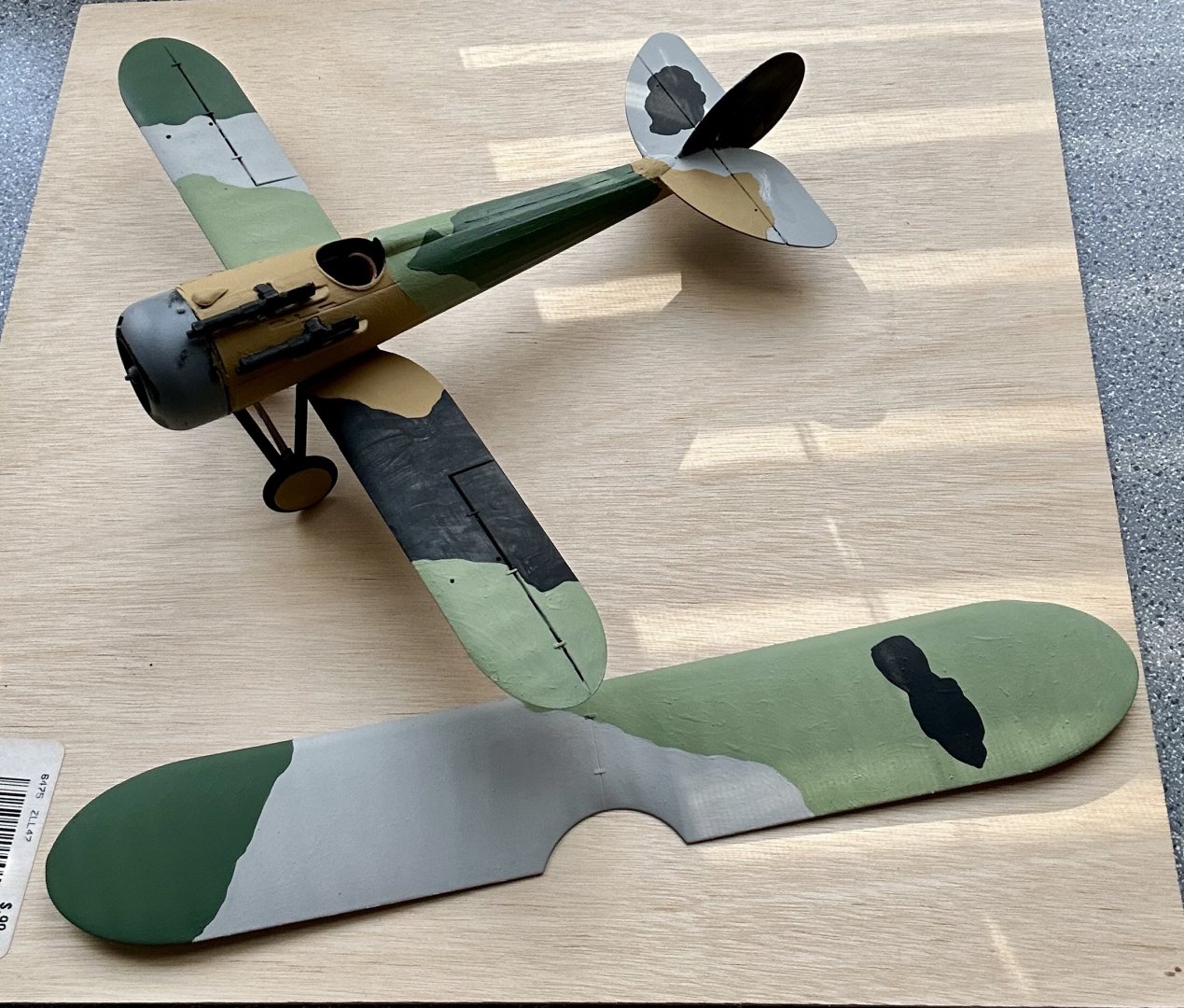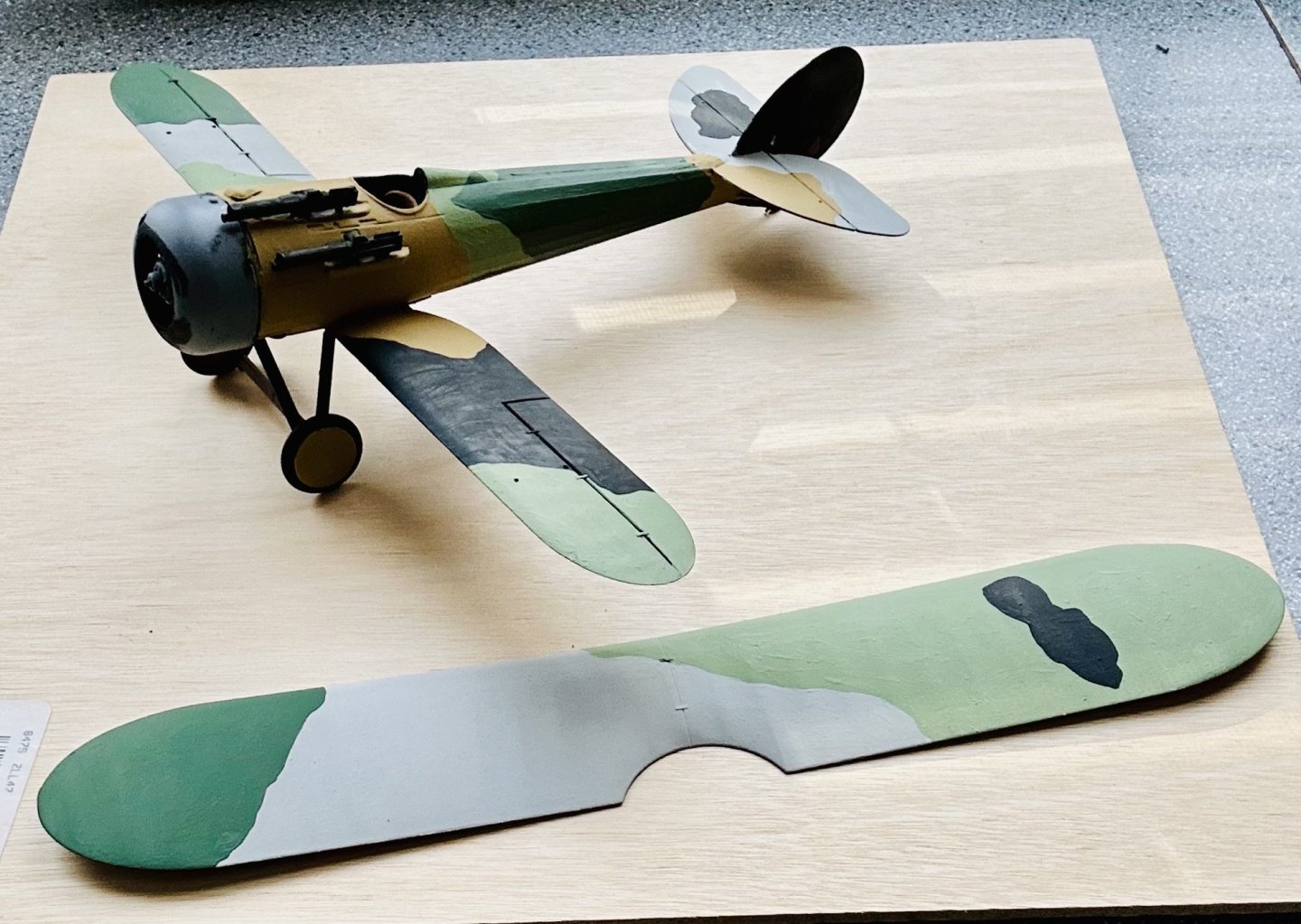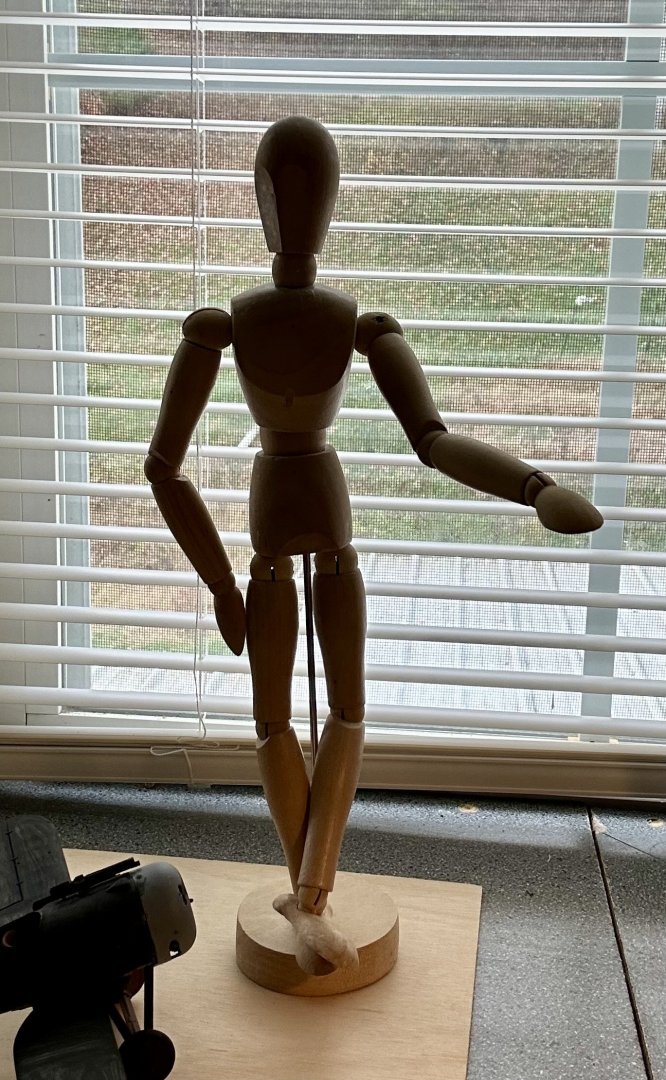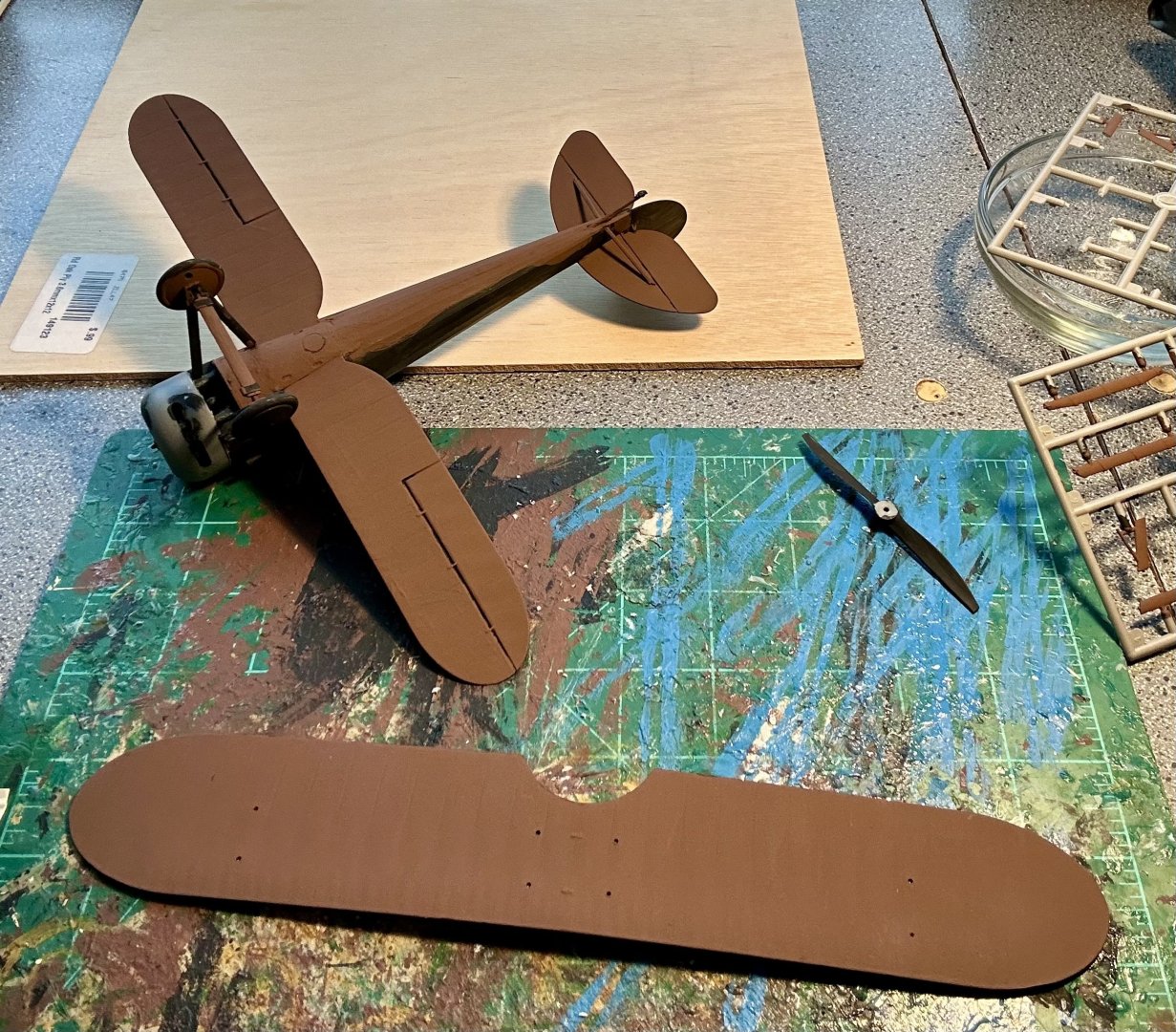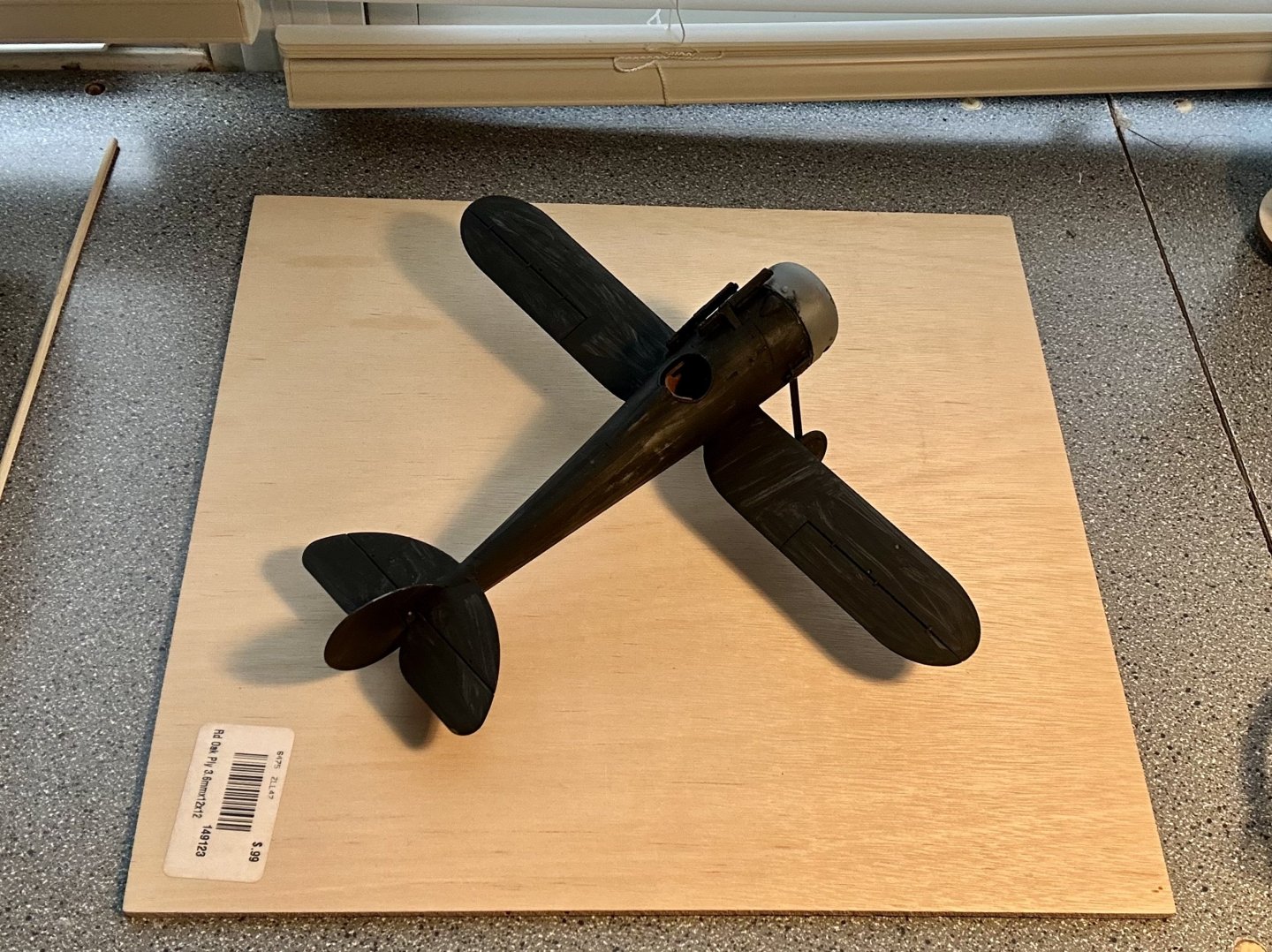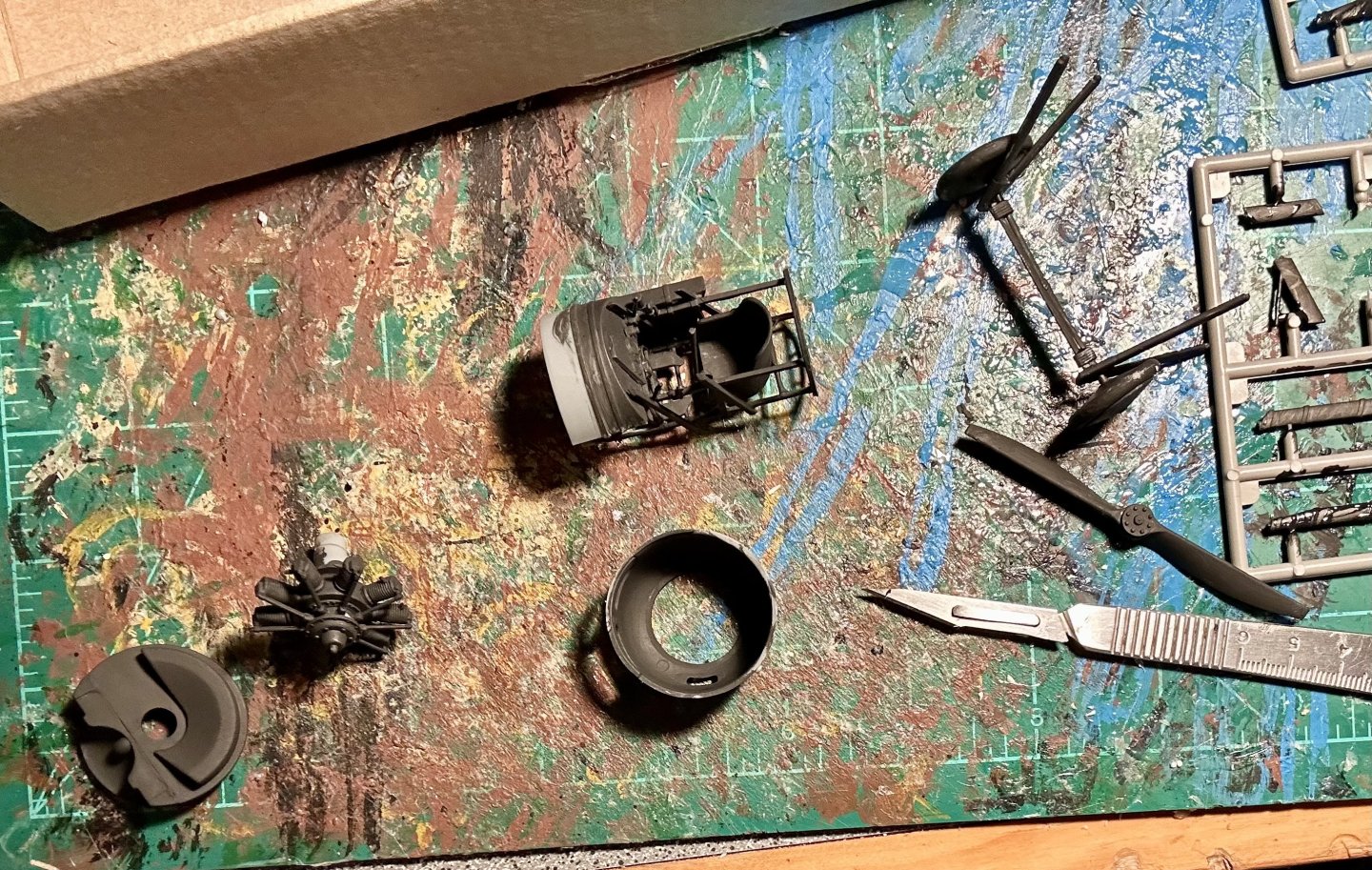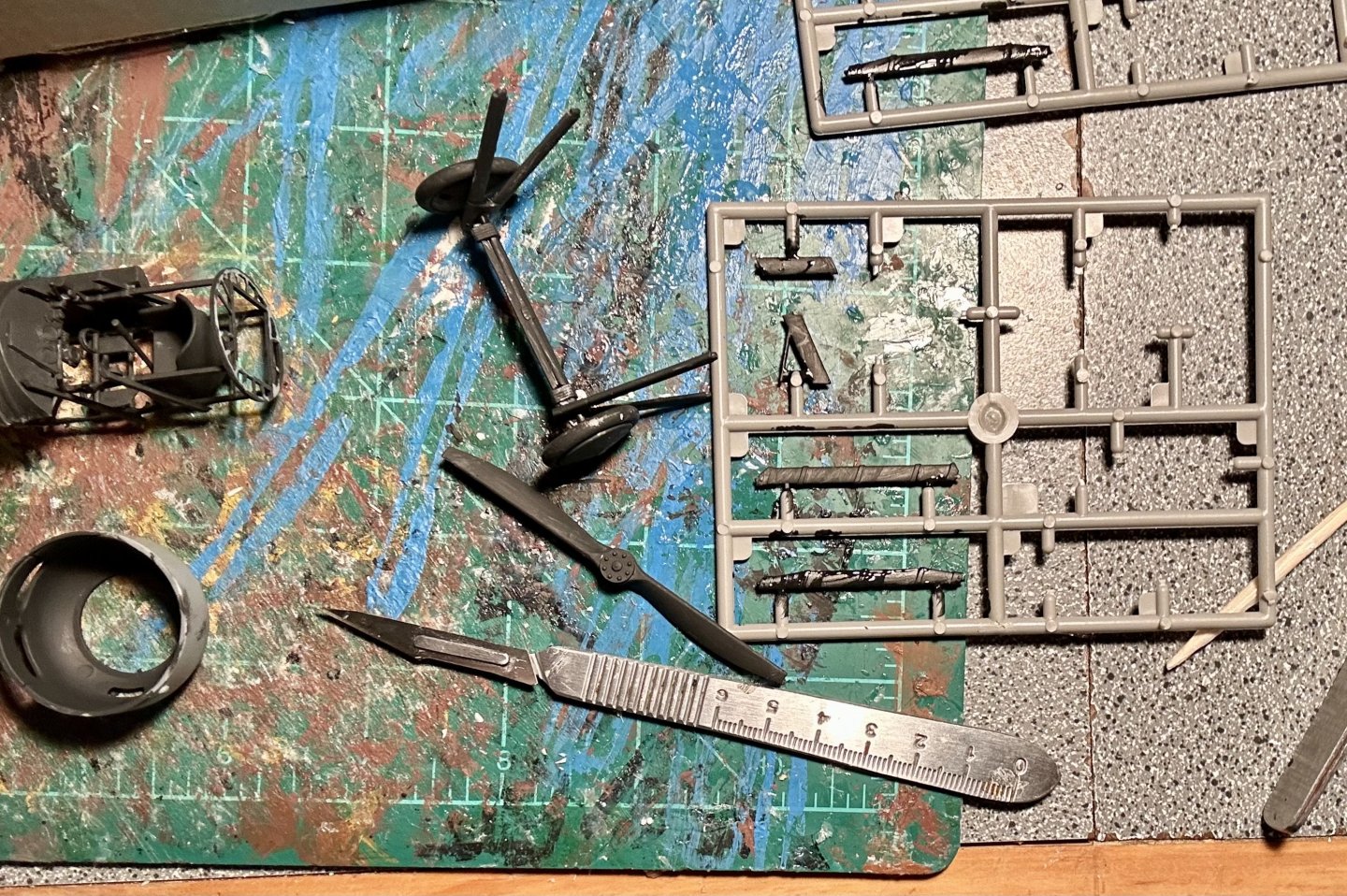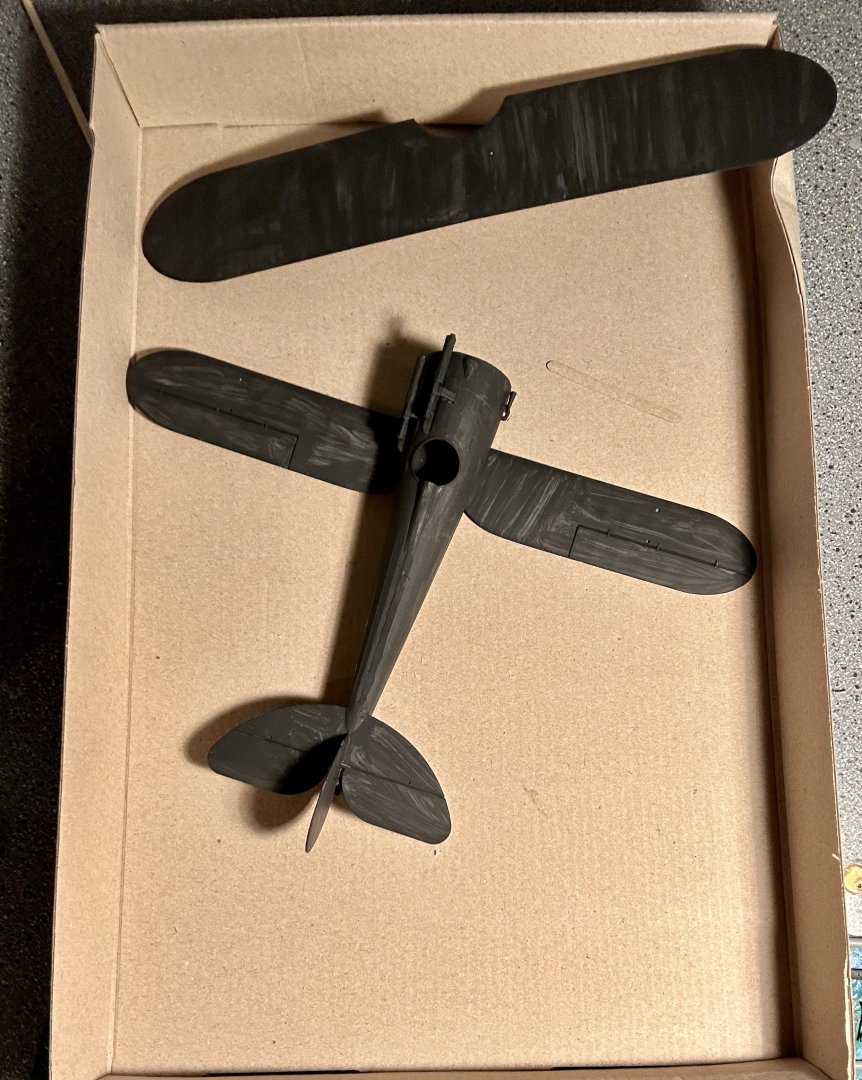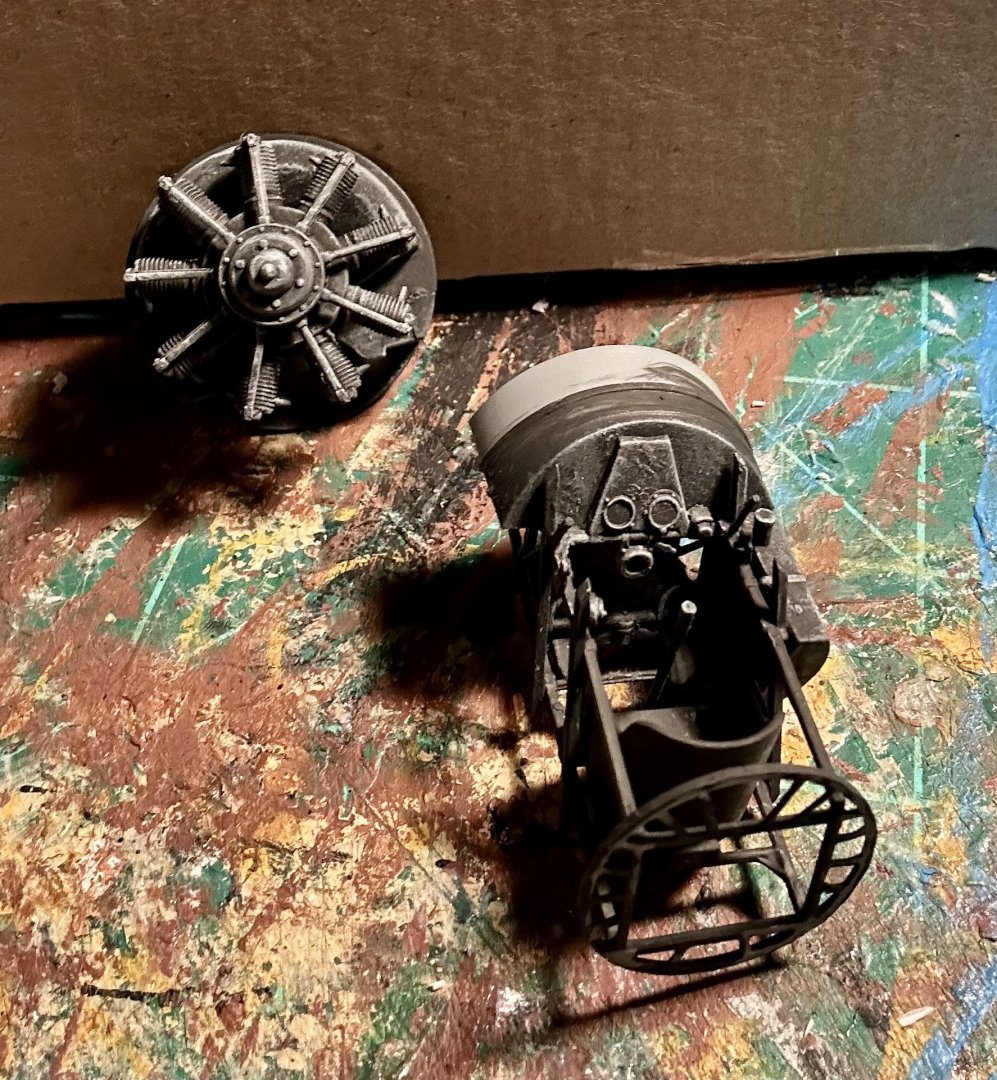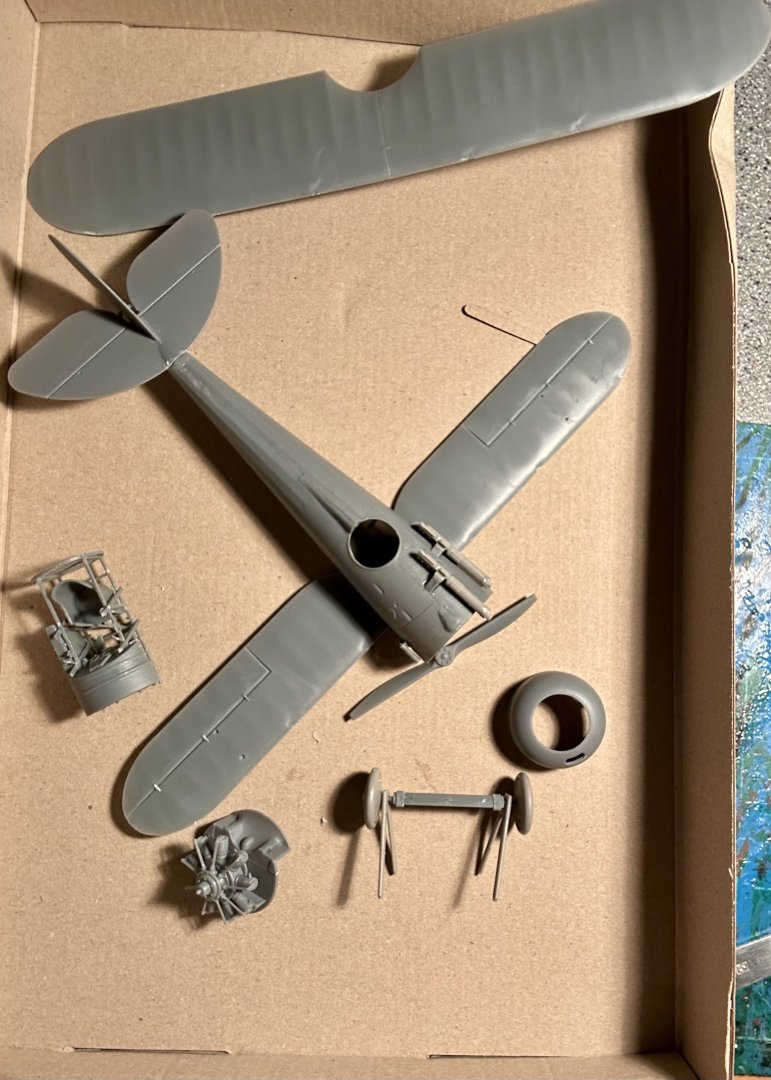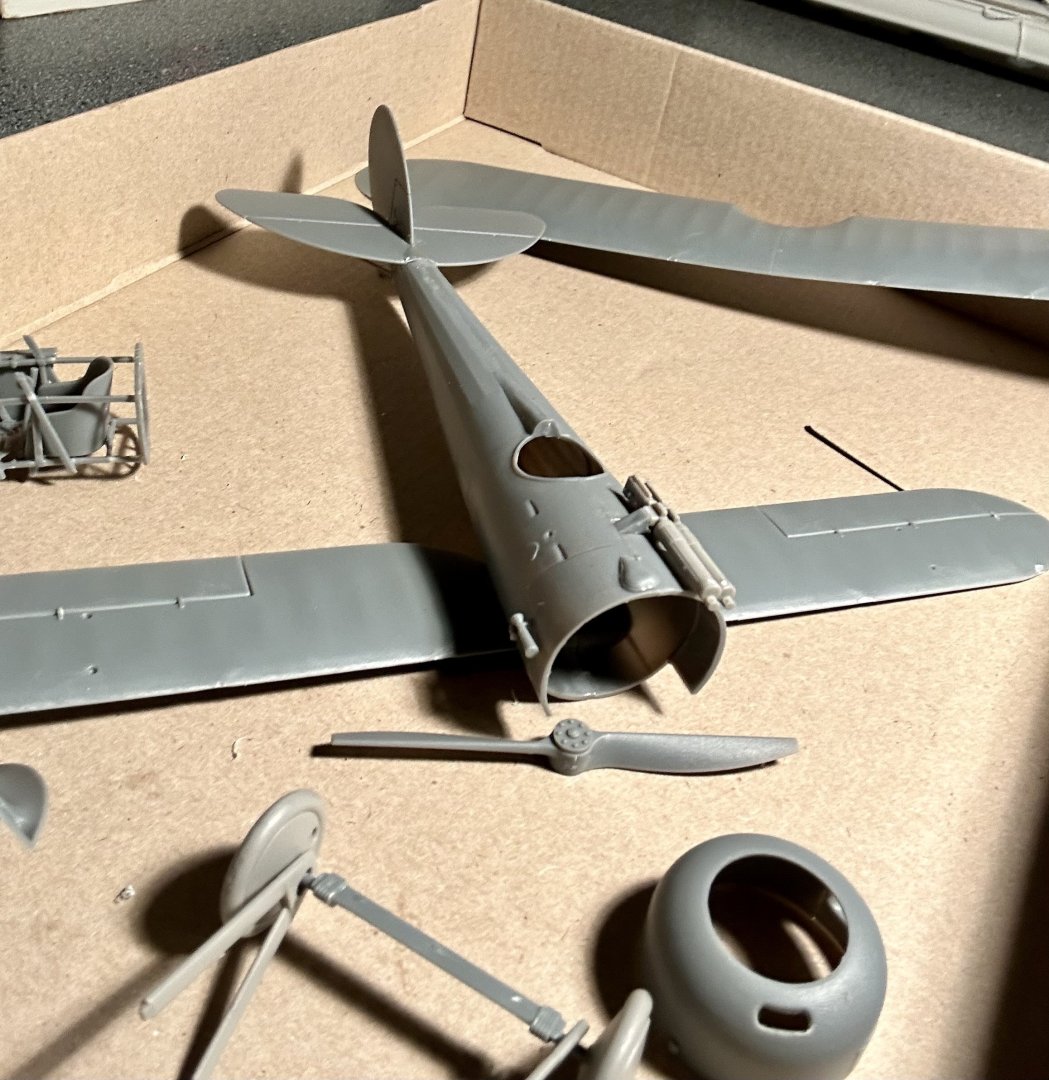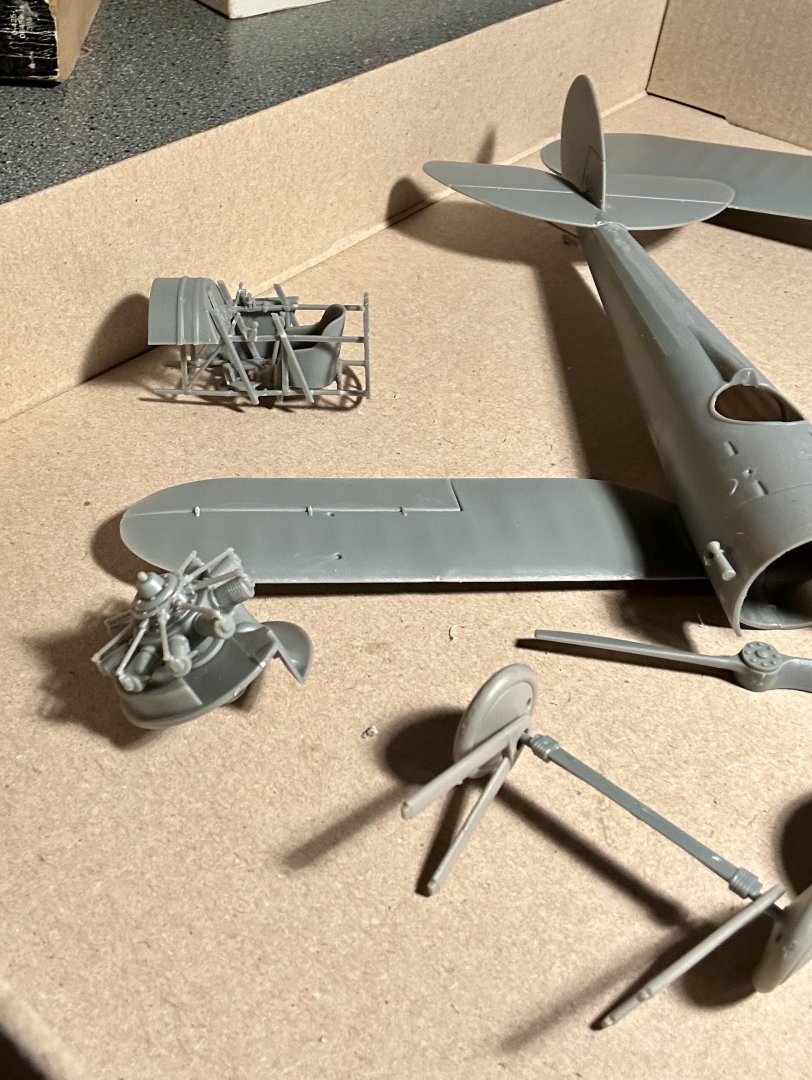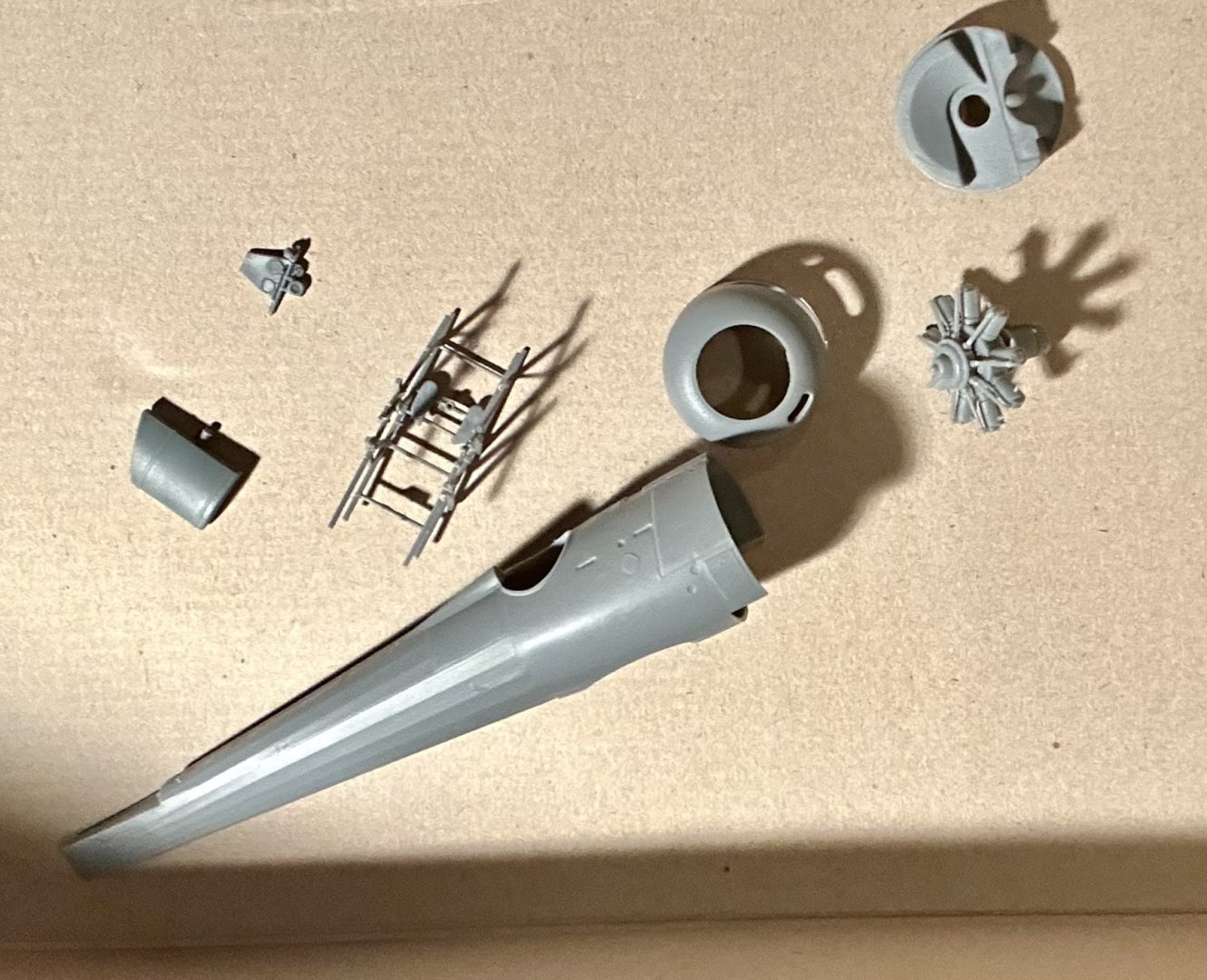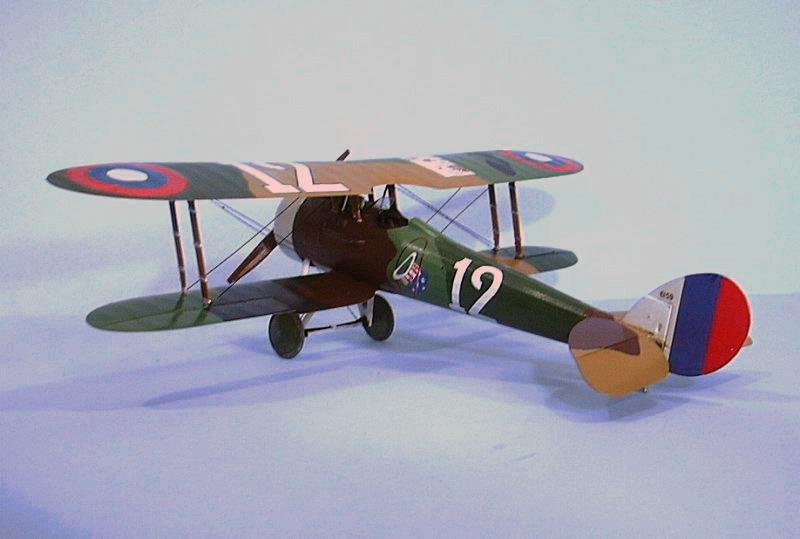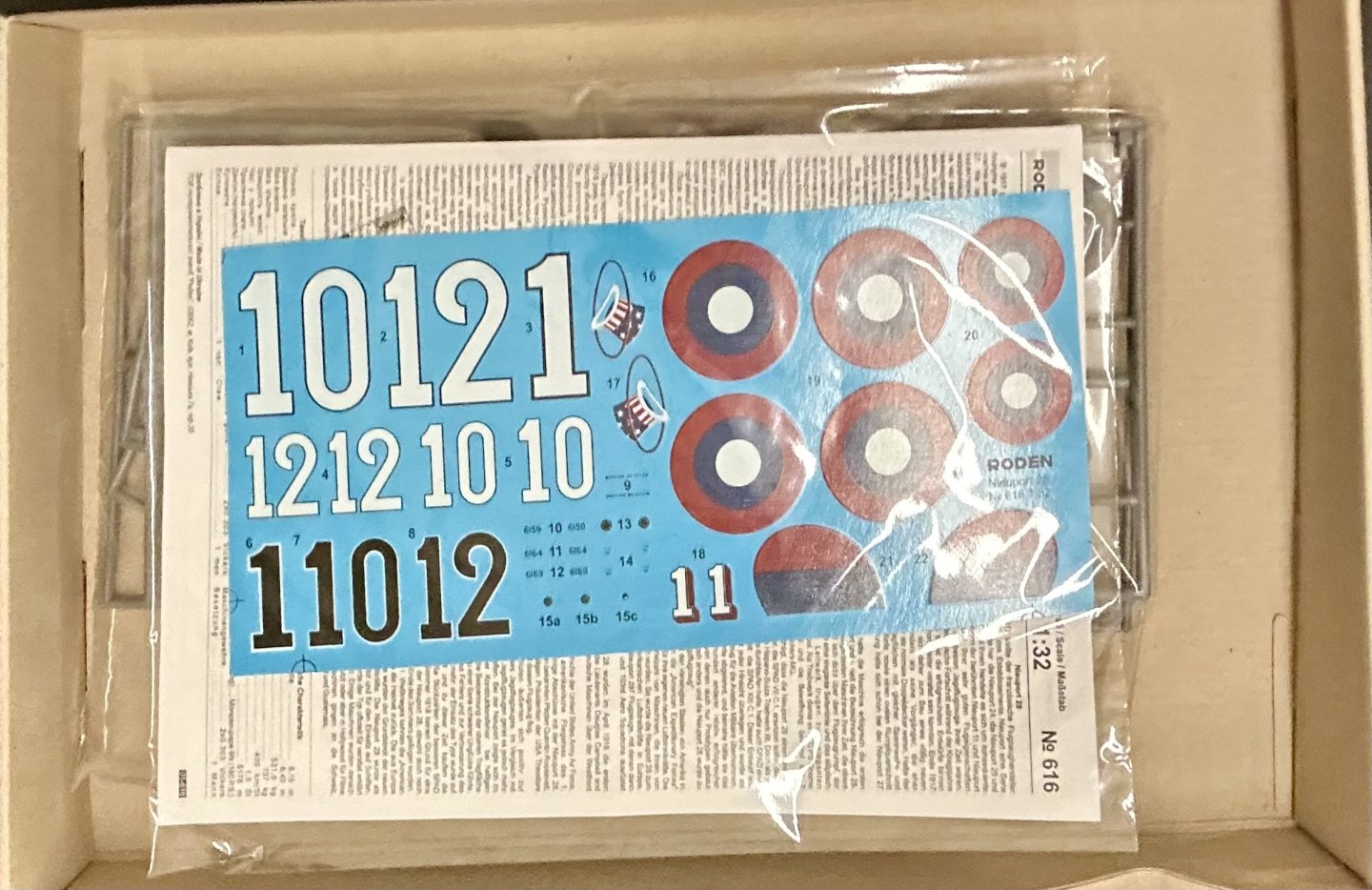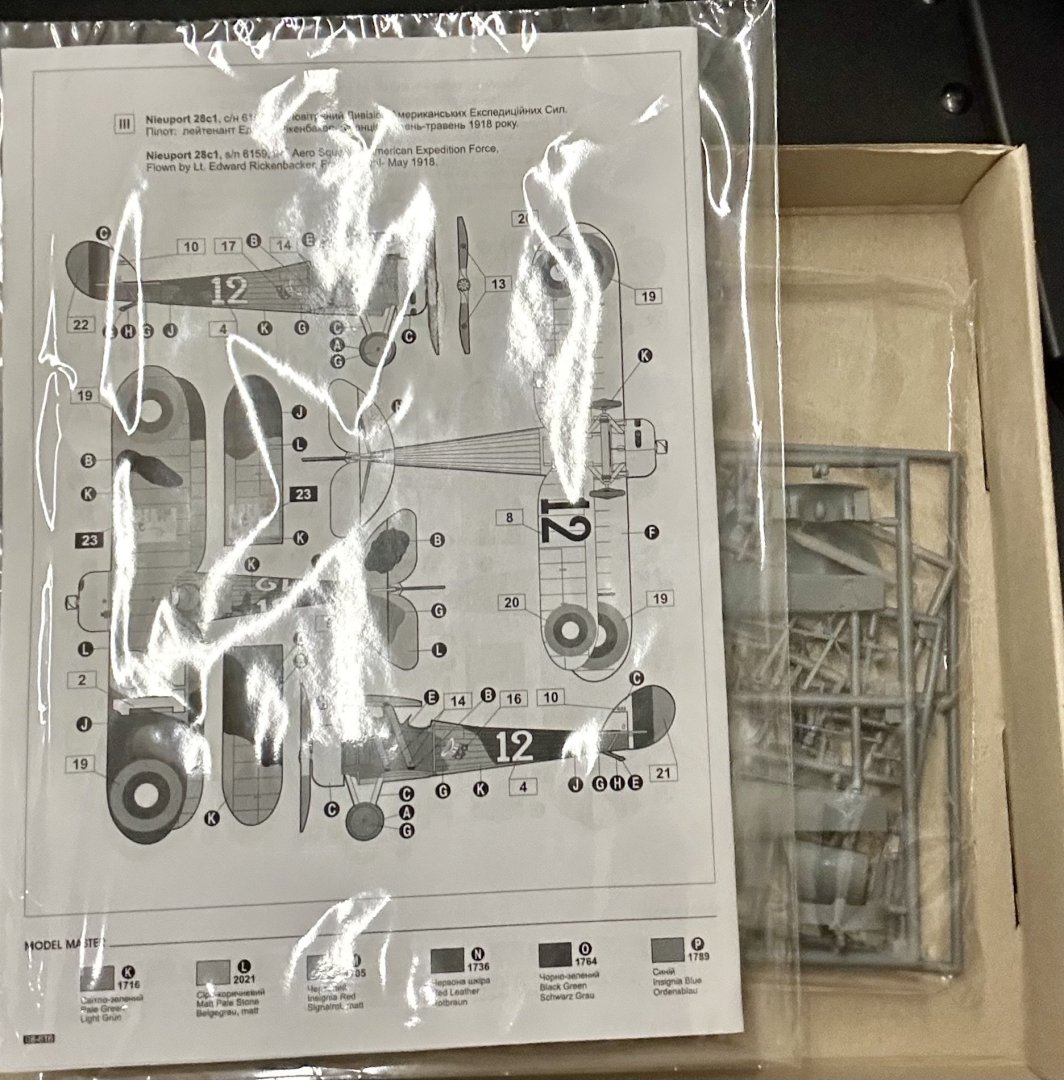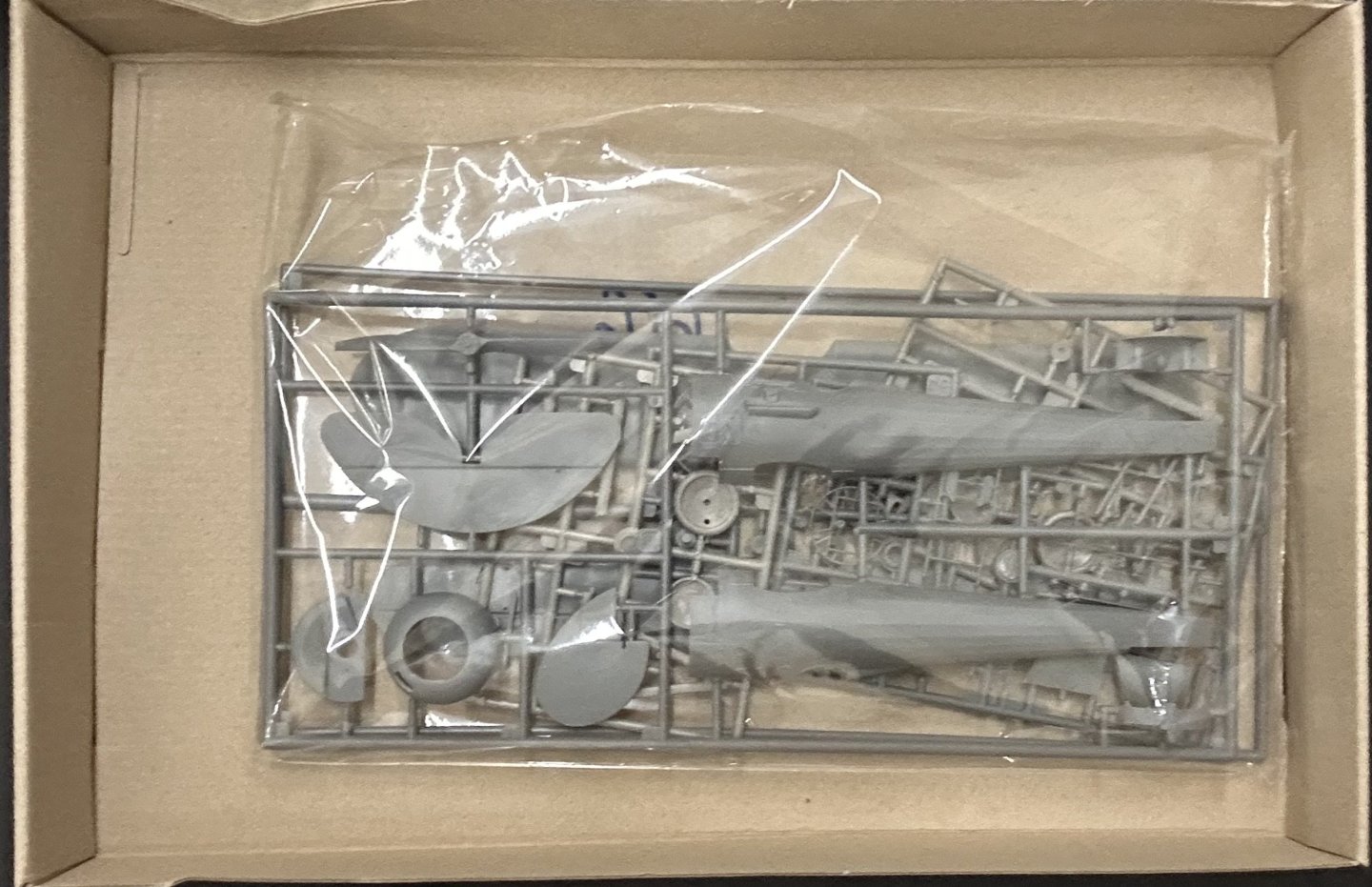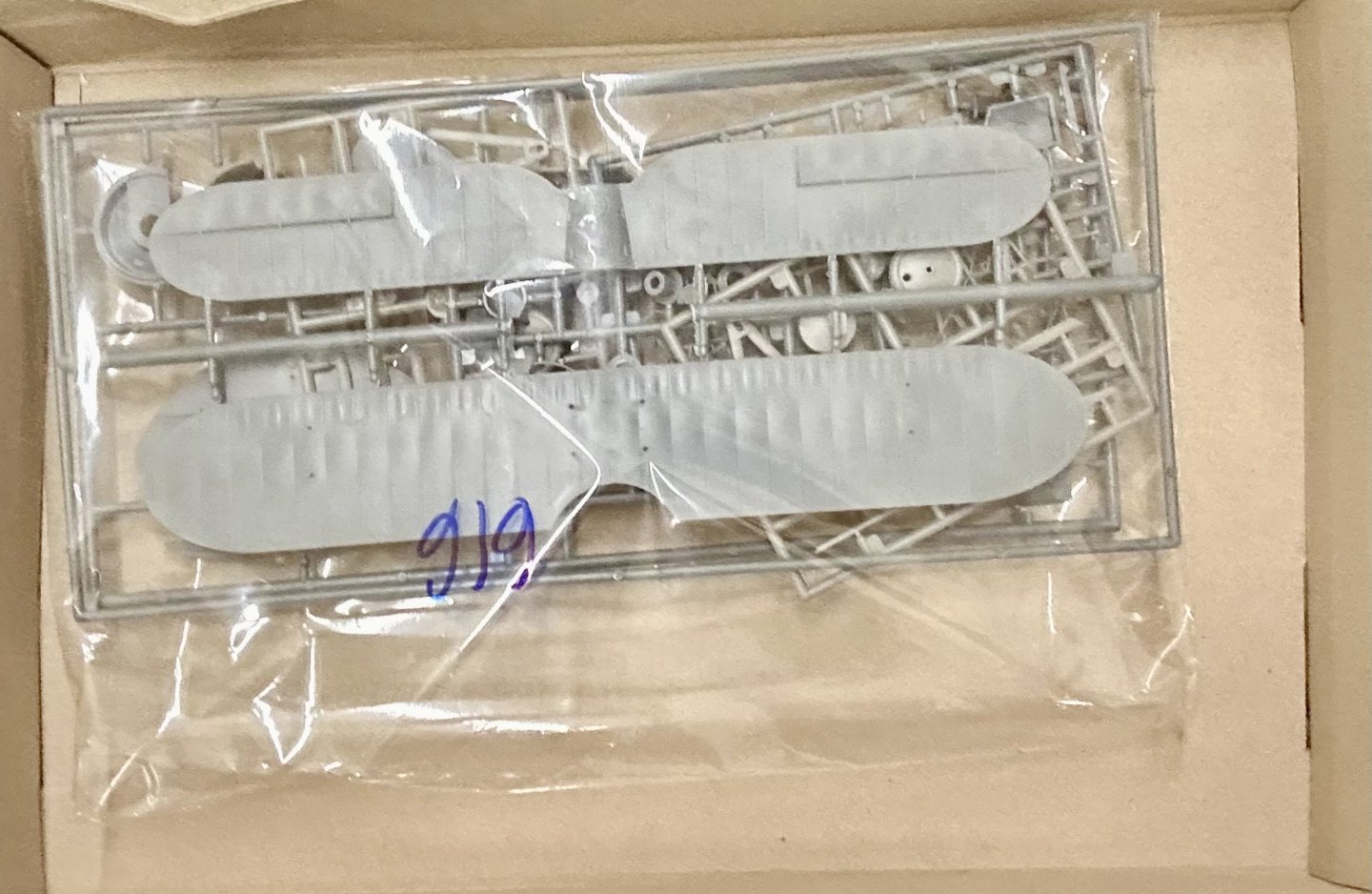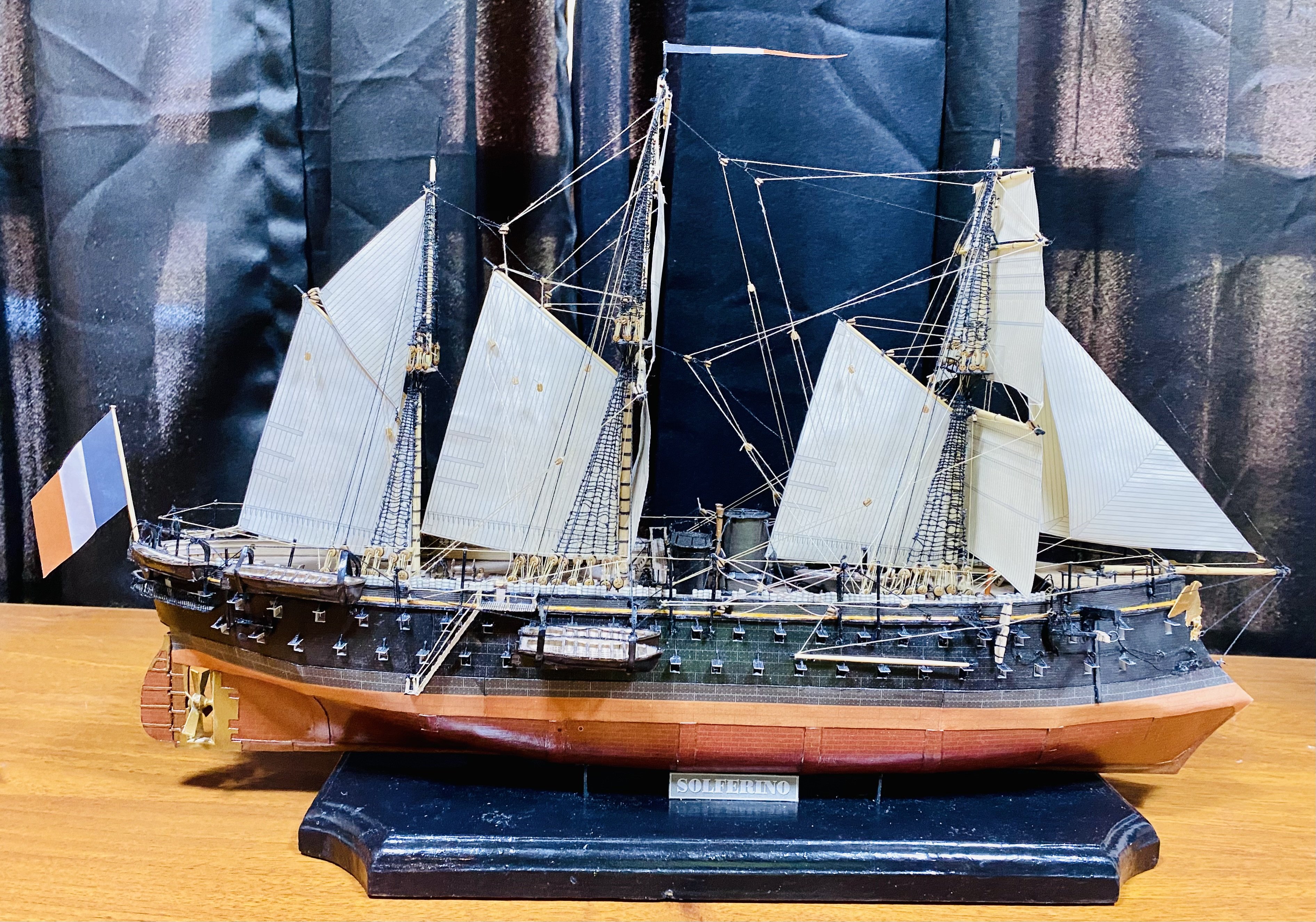
GrandpaPhil
NRG Member-
Posts
6,154 -
Joined
-
Last visited
Content Type
Profiles
Forums
Gallery
Events
Everything posted by GrandpaPhil
-
The initial base coating is done: It had a 5-color camouflage scheme which I duplicated to the best of my abilities. I don’t have an airbrush, so everything was freehand brush painted. I will finish touch ups and minor details, and paint the engine cowling, the struts, part of the propeller, and the vertical stabilizer, white the next time I work on the model. Then it’ll be time to add some eyebolts and decals, attach the upper wing and on to rigging! Then it’ll be carving time!
-
Absolute beginner here - new to ship modeling
GrandpaPhil replied to AlanR's topic in New member Introductions
Welcome! -
Thank you very much! I have the model initial assembled and know how I want to do the diorama: The initial base coating for the underside of the model is done: I wanted to put Eddie Rickenbacker in scale standing next to his aircraft, but that figure sold before I got a chance to but it. The remaining ones are rather expensive and also in an unsatisfactory pose. So, I’m just going to make my own! Eddie Rickenbacker stood 6’ 2” tall, which makes for a 2 5/16” figure in 1/32 scale. I like this picture so it is the one that I will use: I have a posable artist’s marionette which I will use to design the carving. The pose still needs some work and adjustment, but that will get done once I finish the plane. I have never carved a full human figure before, but I have never let that stop me before. One thing I learned here is that you don’t know what your full capabilities are until you push your limits. I have carved/made 3 figureheads, to include the HMS Victory, and 2 sets of stern carvings before. I carved the carvings for the Revenge and I made a set of stern carvings for the Winchelsea while on a business trip one time (which are unfortunately not in a usable scale). All came out reasonably well, so…we’ll make some wood shavings when the time comes, and see what happens.
-
Kit review USS Missouri (BB 63) - OcCre -1:200
GrandpaPhil replied to Kevin's topic in REVIEWS: Model kits
Looking forward to a build log! -
Welcome! I agree wholeheartedly with @Dziadeczek about “Historic Ship Models” by Wolfram Zu Mondfeld! I have worn several copies out over the last 30 years and the newest copy always sits on my workbench.
-
You and me both!
-
This one is going to a friend of mine’s office and in one of their display cabinets. We’re planning on putting a 54mm figure of Eddie Rickenbacker standing next to the plane, all mounted on a wood base with model railroad grass to simulate a grass field. All subassemblies are made now and awaiting priming and painting. I test fitted everything a little bit ago. Everything fit perfectly. The next step will priming everything black and then painting the interior stuff. I only have the paints for my anchors for the Esther at the moment, but that will cover most of the model except for the camouflaged exterior. I need to get into my stash of eyebolts for the rigging and install them before final assembly.
-
Modeling relaxes me. I chose ship modeling in particular because I went to a maritime museum 30 years ago as a kid and decided that I wanted one of those models. 30 years later, I am still building them. I really enjoy the challenge. Like Chris, I also predominantly build in card because it works well for me, is lots of fun, and is relatively cheap. Plus, I had a LOT of fun building my first card ship (the Prince de Neufchatel) after reading a tutorial on this website by Ab Hoving on scratch building from card.
-
Welcome!
-
Lots of subassemblies getting ready for final cleanup and prep work prior to initial priming and base coating. I only build in plastic every once in a while, so I’m having to recall some skills. I will now vouch for Roden’s quality. There is very little flash and the molding is nearly perfect. Everything has been going together pretty much perfectly. I will warn inexperienced builders that there are no alignment pins on the fuselage halves. I have never built a WWI plane in plastic before. The rest of them were balsa for me.
-
- 301 replies
-
- Constitution
- Bluejacket Shipcrafters
-
(and 1 more)
Tagged with:
-
Where is a good place to buy from? - moved by moderator
GrandpaPhil replied to wdretired's topic in Wood ship model kits
I like buying from Cornwall Model Boats and Ages of Sail. I have had excellent experiences with both companies. -
Orks Dakka Jet by RGL - FINISHED - Warhammer
GrandpaPhil replied to RGL's topic in Non-ship/categorised builds
Very nicely done! -
Welcome! I have not built the dory, but the beveling is called spiling and is to allow the planks to fit together flush.
-
Welcome!
-
Greetings from a clueless Patrick O'Brian fan
GrandpaPhil replied to Galkar's topic in New member Introductions
Welcome! -
James, Artesania Latina just released a kit of the Victory with a full interior: https://artesanialatina.net/en/ships-elite/62518-wooden-ship-model-anatomy-of-english-vessel-hms-victory-1-84-8421426204032.html It looks like it would build to about 4 feet long. That would be an excellent introduction to building a first-rate with a complete interior.
About us
Modelshipworld - Advancing Ship Modeling through Research
SSL Secured
Your security is important for us so this Website is SSL-Secured
NRG Mailing Address
Nautical Research Guild
237 South Lincoln Street
Westmont IL, 60559-1917
Model Ship World ® and the MSW logo are Registered Trademarks, and belong to the Nautical Research Guild (United States Patent and Trademark Office: No. 6,929,264 & No. 6,929,274, registered Dec. 20, 2022)
Helpful Links
About the NRG
If you enjoy building ship models that are historically accurate as well as beautiful, then The Nautical Research Guild (NRG) is just right for you.
The Guild is a non-profit educational organization whose mission is to “Advance Ship Modeling Through Research”. We provide support to our members in their efforts to raise the quality of their model ships.
The Nautical Research Guild has published our world-renowned quarterly magazine, The Nautical Research Journal, since 1955. The pages of the Journal are full of articles by accomplished ship modelers who show you how they create those exquisite details on their models, and by maritime historians who show you the correct details to build. The Journal is available in both print and digital editions. Go to the NRG web site (www.thenrg.org) to download a complimentary digital copy of the Journal. The NRG also publishes plan sets, books and compilations of back issues of the Journal and the former Ships in Scale and Model Ship Builder magazines.

